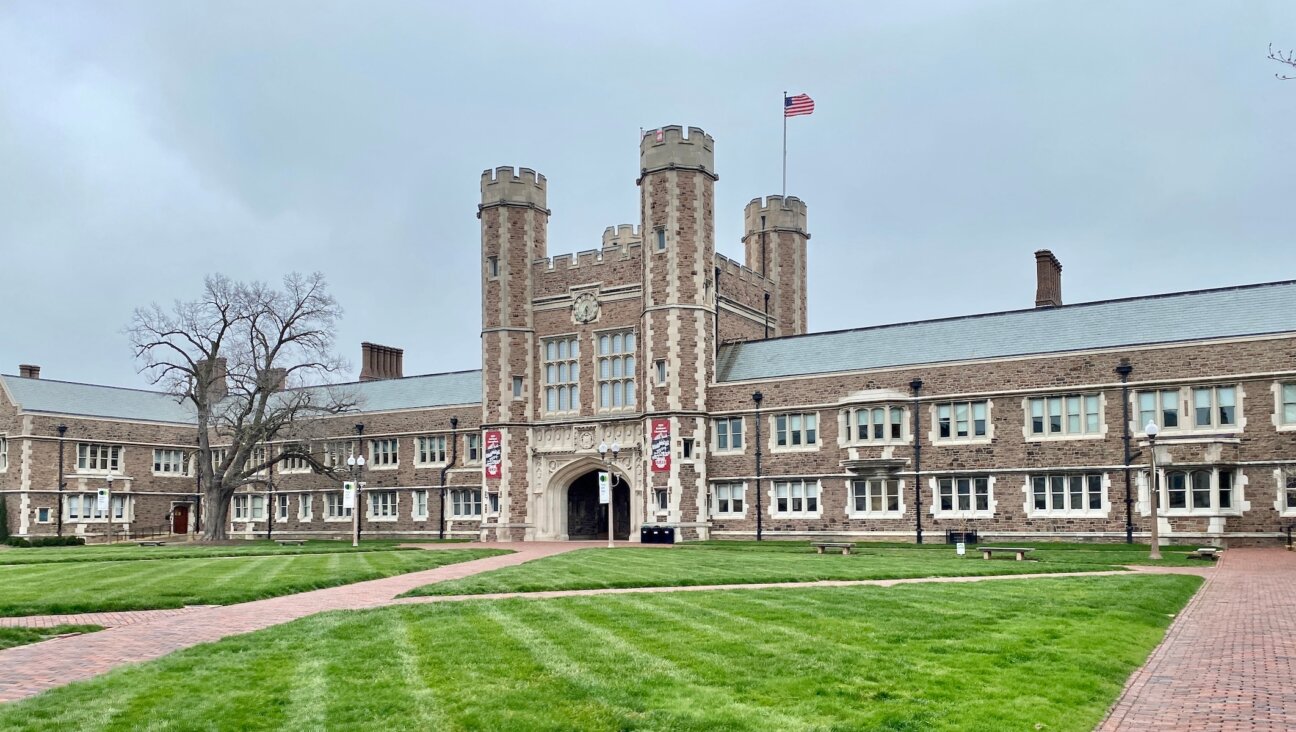Who are the Satmar, a Hasidic Jewish sect in the news

Rabbi Aaron Teitelbaum, center, the head of the Satmar Orthodox group, arrives at Ben-Gurion international airport, 15 August 2007. Image by SHOOKI LERER/AFP/Getty Images
Controversy erupted on Tuesday night after thousands of people in Brooklyn marched in a funeral procession, in violation of social distancing rules, honoring a late rabbi affiliated with the Satmar sect of Haredi Orthodox Judaism (sometimes referred to as “Ultra-Orthodox”).
The Satmars are adherents of Hasidism, a mystical branch of Orthodox Judaism with dozens of different groups that often reject modernity and closely adhere to the teachings and rulings of their rabbi-leader, or rebbe.
The Satmar dynasty was founded in what’s now Satu Mare, Romania, by Rabbi Joel Teitelbaum in 1905. Teitelbaum survived the Holocaust and made his way to America after the conclusion of the war, settling in the Brooklyn neighborhood of Williamsburg. From there, Satmar grew to be one of the largest Hasidic groups in the world.
In addition to the hullabaloo over the funeral, the Satmars have also been in the news recently because of the popularity of “Unorthodox,” a Netflix miniseries based on the memoir of Deborah Feldman, a former Satmar who left the community and moved to Berlin. The miniseries has attracted both acclaim and criticism for its depiction of Satmar life.
By the 1970s, the Satmar population had grown so large that they began constructing a village in upstate New York called Kiryas Joel. The all-Hasidic city would allow the Satmars to be more isolated from the secular world than living in crowded, cosmopolitan Brooklyn.
But after Teitelbaum’s nephew and successor Moshe died in 2006, two of Moshe’s sons both vied to lead the group. Eventually, a schism occurred. Generally speaking, Aharon Teitelbaum leads the Satmars of Kiryas Joel, while Zalman Teitelbaum leads the Satmar of Williamsburg.
Both branches of Satmar Hasidism are staunch anti-Zionists – they oppose the existence of the state of Israel on theological grounds. They also are among the strictest at maintaining separation from the secular community. This has caused some tensions in recent years.
The Jewish population of Kiryas Joel grew so big that Jews were able to be voted into the majority of the local school board, leading to years of fights over alleged favoritism. And in in Williamsburg, distrust of secular media and the municipal government, as well as crowded living conditions, contributed to one of the largest measles outbreaks in modern New York history.
The cramped quarters in both Williamsburg and Kiryas Joel — the latter being one of the poorest and highest-density municipalities in the country — likely exacerbated the spread of COVID-19 among the Satmars, including infecting Aharon Teitelbaum. Indeed, while most New York Orthodox rabbis ordered their followers to comply with social distancing regulations, some Satmar yeshivas stayed open in secret.
Indeed, one of the Satmars’ top priorities has been preventing local governments from regulating their yeshivas, which in many cases receive state funding for their special education programs. New York law requires that private schools like yeshivas provide education that is “substantially equivalent” to public schools. Many people who have left the Satmar community have alleged that Satmar yeshivas barely, if at all, teach secular subjects like English and math. Yeshiva advocates often argue either that that is not true, or that the schools’ Talmudic lessons (which, for example, often include logic puzzles) provide all the information someone needs to survive in the modern world.
Because of their dense geographic concentration and strict adherence to the rulings of their rebbe, the Satmars are one of the most powerful voting blocs in New York City, and to a lesser extent New York state. Both Mayor Bill de Blasio and Gov. Andrew Cuomo have cultivated ties to Satmar leaders; in their recent elections, de Blasio and Cuomo vastly overperformed in Satmar-heavy areas. In turn, the city and state leaders have been criticized for not cracking down on yeshivas that don’t meet the substantial equivalency requirement.
Correction: A previous version of this article claimed that the author of “Unorthodox” was Deborah Goldman. Her name is Deborah Feldman.
Aiden Pink is the deputy news editor of the Forward. Contact him at [email protected] or follow him on Twitter @aidenpink
A message from our Publisher & CEO Rachel Fishman Feddersen

I hope you appreciated this article. Before you go, I’d like to ask you to please support the Forward’s award-winning, nonprofit journalism so that we can be prepared for whatever news 2025 brings.
At a time when other newsrooms are closing or cutting back, the Forward has removed its paywall and invested additional resources to report on the ground from Israel and around the U.S. on the impact of the war, rising antisemitism and polarized discourse.
Readers like you make it all possible. Support our work by becoming a Forward Member and connect with our journalism and your community.
— Rachel Fishman Feddersen, Publisher and CEO





























